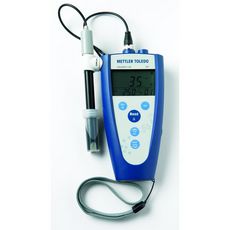Milk is milk, right? Actually, different seasons, farming and heat treatment play an important role in the chemical makeup (and therefore taste and aroma) of many of the foods and beverages we consume, including milk. If you have ever tried goat’s milk, you might remember it being “more robust, waxy, and animal-like” compared to cow milk.
Did you know goats produce around 2% of the world’s milk? I didn’t!
Researchers in Germany have recently looked at goat’s milk in more detail, by analysing the aroma compounds and sensory differences between goat’s milk from two different farms and seasons (Winter and Summer), as well as the changes produced through different heat treatments (pasteurised, UHT-treated and sterilized).
Aroma profile analysis (APA) consisted of a trained sensory team analysing the raw milk samples, of different farms and seasons, through orthonasal (sniffing) and retronasal (where you swallow a sample with your nose pinched, and then release your nose to find you can still smell the sample) olfaction. Eight attributes were measured, including milk-like, fatty, goat-like, stable-like, and hay-like. Not only were differences found between orthonasal (where milk-like and fatty dominated the aroma) and retronasal (goat-like and fatty), but also between milks of different farms. The panel also identified summer-produced milk as smelling more ‘milk-like’, while winter milk was rated more ‘goat-like’. Meanwhile, the highest ratings for the pasteurised and UHT-treated milks were goat-like, and sterilised milk noted as ‘caramel-like’.
No point crying over it… Fact of the matter is that raw goat milk has a good chance of smelling like goat!
The odour-producing chemical compounds were identified by Aroma Extract Dilution Analysis (AEDA) using Gas Chromatography-Olfactory (GC-O), to determine the instensity of the individual components contributing to the overall aroma. AEDA involves diluting the original milk samples to various levels, running each dilution through GC to separate the individual chemical components, and then sniffing the components through a nose port. In the winter and summer milks of both farms, 54 odour-active volatile compounds were detected, with 4-ethyloctanoic acid (4-etC8 which smells goaty or stable-like), 3-methylindole (or ‘skatole’ which smells fecal or stable-like) and an unknown (canola-like, metallic, green) identified in the most dilute samples, yet at different dilution levels for each season and farm.
For the heat treatment milks (pasteurised, UHT-treated and sterilized), 66 odor-active compounds were identified: 4-etC8 and skatole were once again present in the most dilute samples, along with phenylacetic acid (honey-like) and in the sterilised milk, 4-hydroxy-2,5-dimethyl-3(2H)-furanone (or furaneol, which is caramel-like in odour and explains the APA description). From this, we can assume (and chemistry does support) that it is the heat treatment process that produces the sweeter taste!
Furaneol (above) smells like caramel or cotton candy/ fairy floss. Yum!
Side note: I also found this great infographic comparing goat and cow milk, made using information from the US Department of Agriculture. Each has it’s benefits and disadvantages, but if you enjoy your sense of taste and smell, you might want to steer clear of goat milk.
Siefarth C & Buettner A (2015).
The Aroma of Goat Milk: Seasonal Effects and Changes through Heat Treatment.
Journal of Agricultural and Food Chemistry 62: 11805-11817
















































